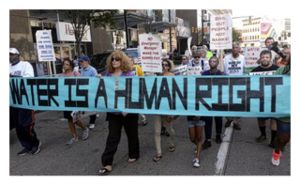The following is an introduction to the Polish edition of . By Fijorr Publishing, 2014.
"From Adam Smith to David Stockman"
By Jerzy Strzelecki
There is no doubt that by David Stockman, the Polish translation of which has been made available to the Polish reader by Fijorr Publishing, is a real chef's , a . There should also be no doubt that its importance, with more and more people having an opportunity to read it, will grow in time, similar to the quality of wine resting in oak barrels.
Although Paul Krugman, the foremost representative of Keynesian doctrines in the United States, in his review of Stockman's book in the called it "an old man's rant" - immediately contributing to a big leap of the book on the bestsellers list - most of other reviews of have been much more positive, if not laudatory.
Michael Levin, for example, on the pages of called "the most important book about the American economy and the world economy published in the last 50 years", adding that it should become "required reading" and "a requirement for voting." The , although critical, and calling Stockman America's "serial apostate", does not question, however, that what he wrote, in his diagnosis of the state of the nation, is an excellent description of "the burdens imposed on 'our children and grandchildren' we were warned about by our parents and grandparents." Lew Rockwell, of the American chapter of the Austrian School, called Stockman's book "the book we have been waiting for and we owe David Stockman a great debt." The most laudatory review of , however, may be found on the web portal which in the very title of an analysis of the book authored by the former head of Reagan's Office of Management and Budget called it "the most important book on economics since ."
II
What makes Stockman's book so important? Why is it so highly praised? What justifies such claims about its greatness? These are the questions we should now attempt to answer.
My answer is as follows. If by Adam Smith, usually considered to be the foundational book of modern economics, shows how a spontaneous economic order can arise out of autonomous activities of individuals, without the necessity of these activities to be coordinated by any political authority (thus the notion of "invisible hand"), may be justifiably seen as the first book in the history of economic thought describing the consequences for the markets - if we can still talk about markets - of the destruction by the Central Banks - in the framework of the fiat paper money system - of the institution of the autonomous interest rate as a fundamental regulatory mechanism of the social order of the "invisible hand."
Paraphrasing Smith, it can be argued that David Stockman's book is the first one in the history of economic thought which describes in detail, mostly based on economic history of the United States from World War I to the present, and in particular on the basis of a detailed analysis of the period from 1985 to 2012, what happens in the economy when a Central Bank, liberated from the anchor of the "barbaric relic" consisting in a linkage between money and gold, becomes a completely discretionary master of the interest rate, replacing in the process of its determination "the invisible hand" with a "visible hand" of the Monetary Political Bureau of the Open Market Committee of the Federal Reserve System.
Stockman is not the first economists who in his reflections on the working of the economic system focused on the creation of money and the determination of the interest rate, considering those two as the key institutions in regulating the economic order, in particular in the context of the analysis of the so called business cycle. The institution of the interest rate is the cornerstone of the business cycle theory of the so called Austrian School. The main architects of this theory were, Knut Wicksell, a famous Swedish economist who studied in Vienna and was Carl Menger's pupil, Ludvig von Mises, and his pupil Friederich Hayek.
According to this theory, business cycles of the modern "credit economies" (to use Wicksell's term) result from economic booms produced by the expansion of credit by commercial banks, acting in the framework of the fractional reserve system and thus being able to lower the market interest rate for loans below the wicksellian natural interest rate which equilibrates the level of saving and investments in the economy. The market interest rate pushed below the natural rate induces economic actors to produce a greater volume of investments in the aggregate than the volume of available savings. As a consequence, a large part of investment projects turn out to be a mistake, as they are uneconomic. Sooner or later the boom ends in a crash.
What occupies the key place in Stockman's reflections in this area is the issue of the termination of the link between money and gold and the influence of this phenomenon on the workings of the international financial system. Pioneering a central position in this area of economic inquiry is definitely due to Jacques Rueff, one of the most famous French economists of the XX century, an adviser to both Raymond Poincare's government in 1926 and to General De Gaulle in the 1960's. Rueff was the most ardent supporter of the return of the West to the classical "gold standard", desperately calling politicians to go back to the "barbarous relic" before the impending catastrophe. It can be reasonably argued that is the first book in the history of economics linking these two theoretical perspectives, and developing both of them in substantial ways in the process of a very detailed analysis of the United States economic history in the period from 1995 to 2012. This is the main root of the book's claim to greatness.
III
In terms of economic theory, the key chapter of is chapter 13: "Milton Friedman's Folly: Rise of the T-Bill Standard." Stockman argues on its pages that Friedman, undoubtedly a great supporter of capitalism and free markets, on the other hand, in his monetary theory, criticizing the gold standard and calling for the replacement of dollar's "golden fetters" with floating rate paper dollar, contributed crucially to the destruction of the autonomous interest rate as a key regulatory institution of the free markets, and to its replacement by an interest rate discretionally set by the monetary central planner, embodied by the FED. In this new international monetary system, inaugurated in August 1971 by President Nixon's announcement of the closure of the so called "gold window", i.e. termination of dollar's link to gold, the key role in determining the interest rate is performed by the operations of purchase and sale of treasury bonds by the Federal Open Market Committee (FOMC) of the Federal Reserve System, the FED.
The abolition of dollar's link to gold allows the Central Banks to set the interest rate in an absolutely discretionary manner, thus leading to the destruction of the self-regulatory mechanism of interest rate fluctuations within the course of the business cycle. What is equally important, Friedman's invention of discretionary setting of the interest rate in the context of the international monetary system, characterized by floating exchange rate fiat paper monies, becomes an ally and a catalyst of the Keynesian contraption of deficit finance, permitting the generation and financing of sovereign debt for a much longer time than would be the case either under the classical gold standard or under its modified version, known as the gold exchange standard characteristic for the Bretton Woods System. The Central Bank, having the possibility of manipulating the interest rate in a discretionary manner, tends, under the pressure of politicians and financial institutions, to set the market interest rate below the wicksellian "natural rate", thus permanently falsifying the cost or the price of money.
Friedman's monetarism becomes thus an ally of Keynesian deficit finance, a necessary condition of the Keynesian "prosperity management policy", through permanent stimulus of demand via the constant accretion of sovereign debt issued at low cost. The 2008 Lehman's crisis is shown by Stockman to be a portent of the end of the Keynesian State, built on false prosperity based on credit/leverage, the price of which is falsified by Central Banks, and the FED in particular.
The Keynesian policy of stimulating "aggregate demand" via budget deficits, its critics argue, may have positive effects in the short term but must necessarily have nefarious long term results. Keynes, famously, answered his critics that "in the long term we are all dead." Lehman's crisis, says Stockman, means the coming of this very Keynesian "death in the long term", when the economy dies under the burden of debt, private and sovereign, accumulated during the long period of the application of Keynesian formulas for "stimulating the economy", the real meaning of which has always been living on credit, facilitated by the manipulation of the interest rate by Central Banks, made possible, in turn, by Milton Friedman's floating rate paper dollar theories.
IV
For a Polish reader, coming from a country which barely a quarter of a century ago escaped the clutches of the economic/social system based on a set of social theories known as Marxism-Leninism, should be of particular importance. Why? Because Stockman's book presents a very clear diagnosis of the nature of the fundamental economic problem faced by Poland today. It is true that Stockman's is focused on the United States, but its diagnosis of the character of the contemporary economic crisis applies also to Europe.
Following its exit from the world of Marxism-Leninism, Poland entered the western economic system in the last stages of the so called "Great Moderation", i.e. international prosperity founded on the theories of Keynesism-Friedmanism. The key traits of the world of Marxism-Leninism were the nationalization of the means of production, justified by Karl Marx's conviction that private ownership of capital is the essential source of most evil on Earth, and the central role of the Communist Party as the key instrument in the process of implementing the New Social Order. The political-economic social order based on Keynesianism-Friedmanism is based, as the world of Marxism-Leninism, on the conviction of the fundamental instability and imperfection of Adam Smith's "invisible hand", meaning that the free market necessitates permanent state intervention and deficit finance as a source of stabilization. The crucial institution making it possible to implement this project is the Central Bank, acting, as it were, as a form of monetary Political Bureau (i.e. the key center of power in the Communist Party).
The problem is that the project of Keynesianism-Friedmanism has clearly entered the final stages of its shelf life, as it were, as the model of economic development based on permanent borrowing of demand from the future has inevitably run its course, as indicated by the indices of sovereign debt and general leverage in most of EU countries. Having said that I will now leave the answer to the question: Should Poland join the EU Fiscal/Banking Pact to the conscience and wisdom of the readers.
Early in the XX century, in 1920, Ludwig von Mises, wrote a famous short treatise . He argued that the absence of private property of the means of production would make it impossible in the socialist economy to rationally allocate resources, i.e. to engage in rational economic calculation. Although the Austrians (Mises and Hayek) lost the debate on the possibility of national economic calculation in the socialist commonwealth, which took place in the 1930's, and it was Lange and Lerner who were announced to be the winners, today, having behind us the experience of communist economies, we know that it was the Austrians who were right in their diagnosis. Whoever doubts this statement should read books by the late Janos Kornai.
In their essence by David Stockman and by Ludwig von Mises are treatises on the same subject, or better, on the same issue. While Mises argued the impossibility of rational economic calculation within the economic system lacking private property of the means of production, Stockman's treatise could well bear the subtitle "Economic Calculation in the Fiat Paper Money System", as its key argument states the impossibility of rational economic allocation within the framework of fiat paper money deprived of any anchor in gold, where the interest rate is discretionally determined by the Central Bank via open market operations characteristic of the "war economy" - with all its consequences.
Is there a way out of this predicament?
In the conclusion of his book Stockman argues that it is necessary to return to the classical gold standard, stating at the same time that although returning to the classical gold standards seems the only solution, the political chances for its implementation look rather slim. All those who argue that the return to the classical gold standard is rubbish, impossible or hopelessly naive, should be reminded that until quite recently the exit from communism was perceived in a similar manner - as rubbish, impossible or naïve. And yet it happened. Taking into account the fact that Marxism - Leninism and the abandonment of the classical gold standard have similar, if not the same, roots - the catastrophe of World War I, , as Alexander Solzhenitsyn called his unfinished great book - the probability of putting an end to the fiat paper money system might be greater than we all think.







